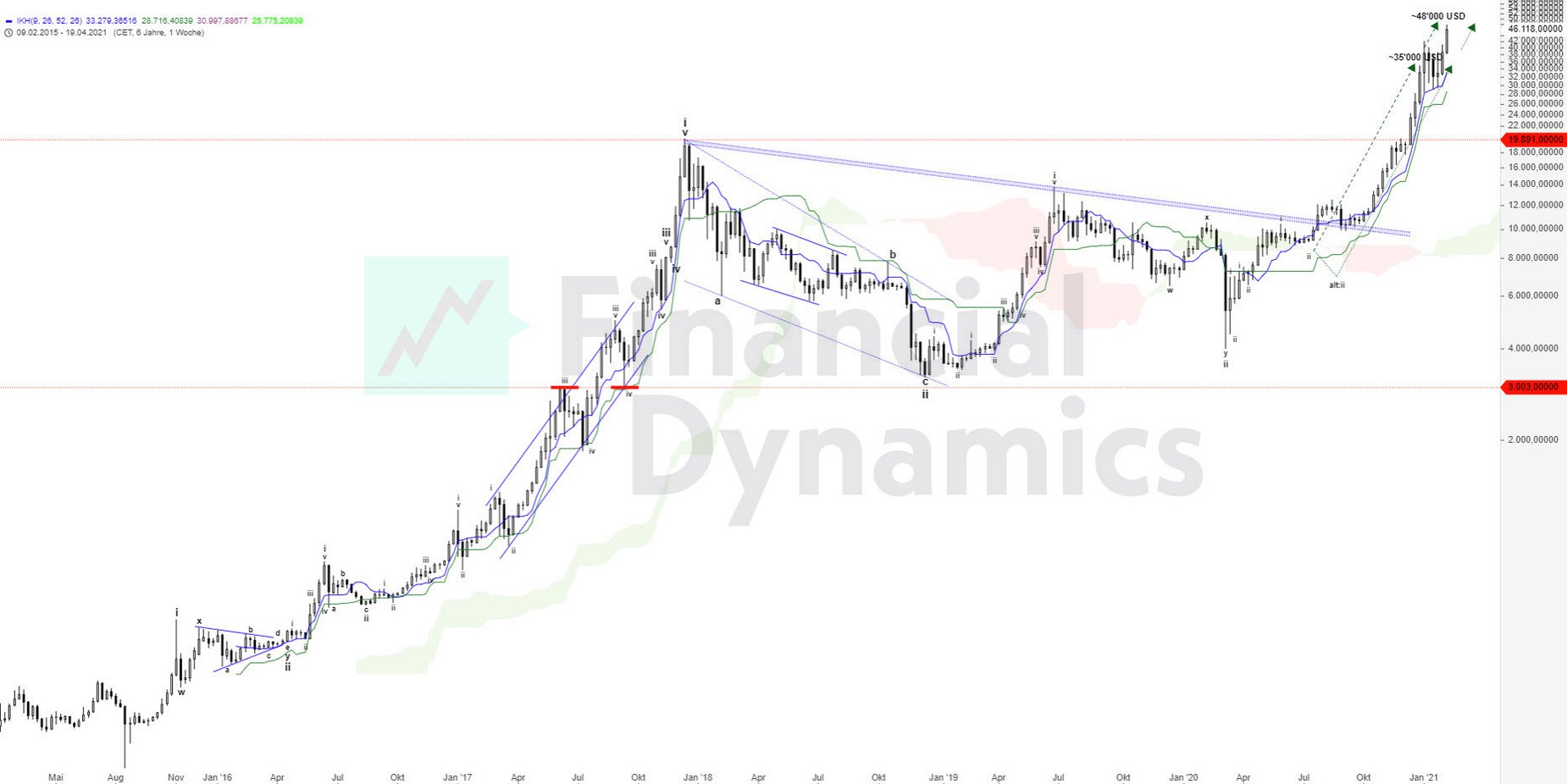
Bitcoin: Krypto(nite) vs. FIAT.?
Purpose
Bitcoin is the first and world's strongest cryptocurrency. It uses a decentralized booking system based on a blockchain. Payments are cryptographically legitimized (digital signature) and processed via a network of computers with equal rights (peer-to-peer). In contrast to the traditional banking system, a transaction with Bitcoin corresponds to the settlement between the parties involved. Proof of ownership of Bitcoin is stored in personal digital wallets (colloquially known as “wallets”). The price of a Bitcoin in relation to legal tender (fiat money) follows the ...
Bitcoin is the first and world's strongest cryptocurrency. It uses a decentralized booking system based on a blockchain. Payments are cryptographically legitimized (digital signature) and processed via a network of computers with equal rights (peer-to-peer). In contrast to the traditional banking system, a transaction with Bitcoin corresponds to the settlement between the parties involved. Proof of ownership of Bitcoin is stored in personal digital wallets (colloquially known as “wallets”). The price of a Bitcoin in relation to legal tender (fiat money) follows the principle of price formation on the stock exchange. The concept for Bitcoin was published in November 2008 under the pseudonym Satoshi Nakamoto, and the first block was created in January 2009.
The virtual monetary and accounting unit Bitcoin is created, stored and managed decentrally in a computing network. Bitcoins can be divided into smaller units to enable smaller transactions. The Satoshi is the smallest unit of the cryptocurrency Bitcoin. It is named after Satoshi Nakamoto, the creator of the protocol. 100 million Satoshis correspond to one Bitcoin. In simple terms, bitcoins are exchanged electronically between participants. Their ownership is verified by the possession of cryptographic keys. Each transaction of monetary units is provided with a digital signature and recorded in a public database operated by the entire network, the blockchain.
Bitcoin monetary units can currently also be exchanged for other means of payment and currencies on special - mostly unregulated - online exchanges, similar to the foreign exchange market. New units of cryptocurrency are gradually generated through mining. Bitcoin participants can take part in the generation process by investing computing power. All participants compete for an amount that is distributed to one of the participants approximately every ten minutes, as well as for the acquisition of the transaction fees. The result of the complex calculation is used to confirm third-party payments and ensures the operation of the Bitcoin network. The maximum amount of money is set by the network protocol at just under 21 million (20,999,999.97690000) units and cannot be influenced by individual participants.
Analysis
Bitcoin was not spared from the corona crash either and slumped from over USD 10,000 to just under USD 4,000 between mid-February and mid-March. As the slump did not fall below the low of December 2018, the fractal can be interpreted as wave “c” of a “ii”. Since the low in March 2020, Bitcoin has practically made up the entire price losses and briefly topped the USD 10,000 mark again in May and June.
According to the Elliott wave theory, Bitcoin completed the first cycle at the end of 2017 with the finalized wave “i”. Almost exactly one year later, the “a-b-c” ...
Bitcoin was not spared from the corona crash either and slumped from over USD 10,000 to just under USD 4,000 between mid-February and mid-March. As the slump did not fall below the low of December 2018, the fractal can be interpreted as wave “c” of a “ii”. Since the low in March 2020, Bitcoin has practically made up the entire price losses and briefly topped the USD 10,000 mark again in May and June.
According to the Elliott wave theory, Bitcoin completed the first cycle at the end of 2017 with the finalized wave “i”. Almost exactly one year later, the “a-b-c” correction into wave “ii” ended at around USD 3,250. After the completed wave “ii”, sub-wave “i” formed until June 2019, followed by the corrective wave “w-x-y” into wave “ii” in March 2020. Since then, the first features of wave “iii” have been unfolding with a target above USD 35,000.
However, the seasonality is sending a small warning sign. From the end of July until around the beginning of October, it switches to a negative statistical phase.
The search queries on Google Trends indicate that Bitcoin is miles away from a euphoric phase. At its high of around USD 20,000, the value on Google Trends was 100. Today, on 30 June 2020, it stands at 10. There is currently no sign of widespread interest from the masses, which is positive for the anti-cyclical.
Conclusion
- As long as Bitcoin holds the USD 6,490 mark, subsequent rises to new highs are possible at any time in the coming months. Long-term price targets are above USD 35,000.
Bitcoin
- VALOR 45466400
- ISIN CH0454664001
- Author Oliver Dolezel
- Date 30.06.20
Analysis Performance
Performance since initial analysis
30.06.20


No rating available yet.
Comments
No comments yet.